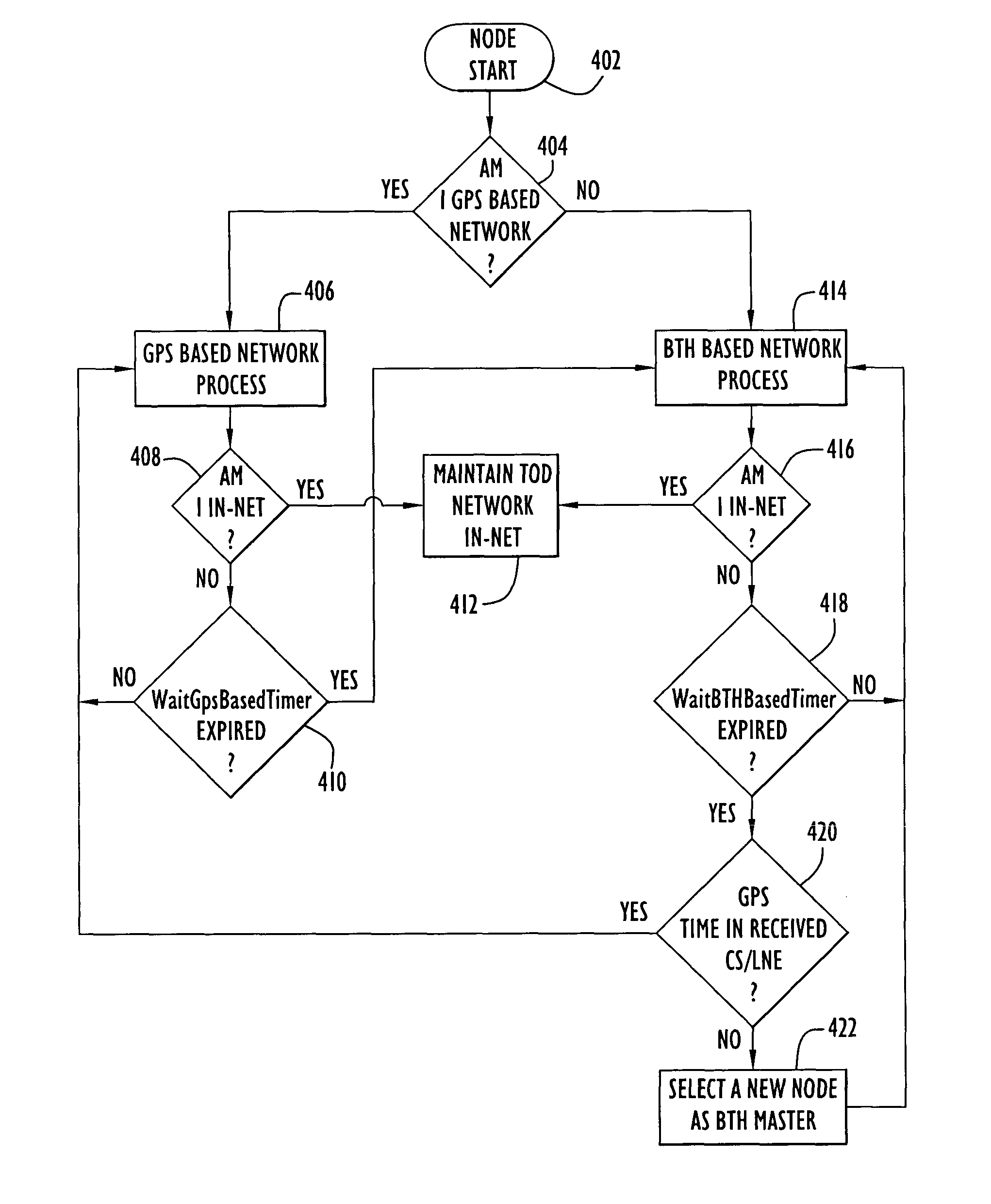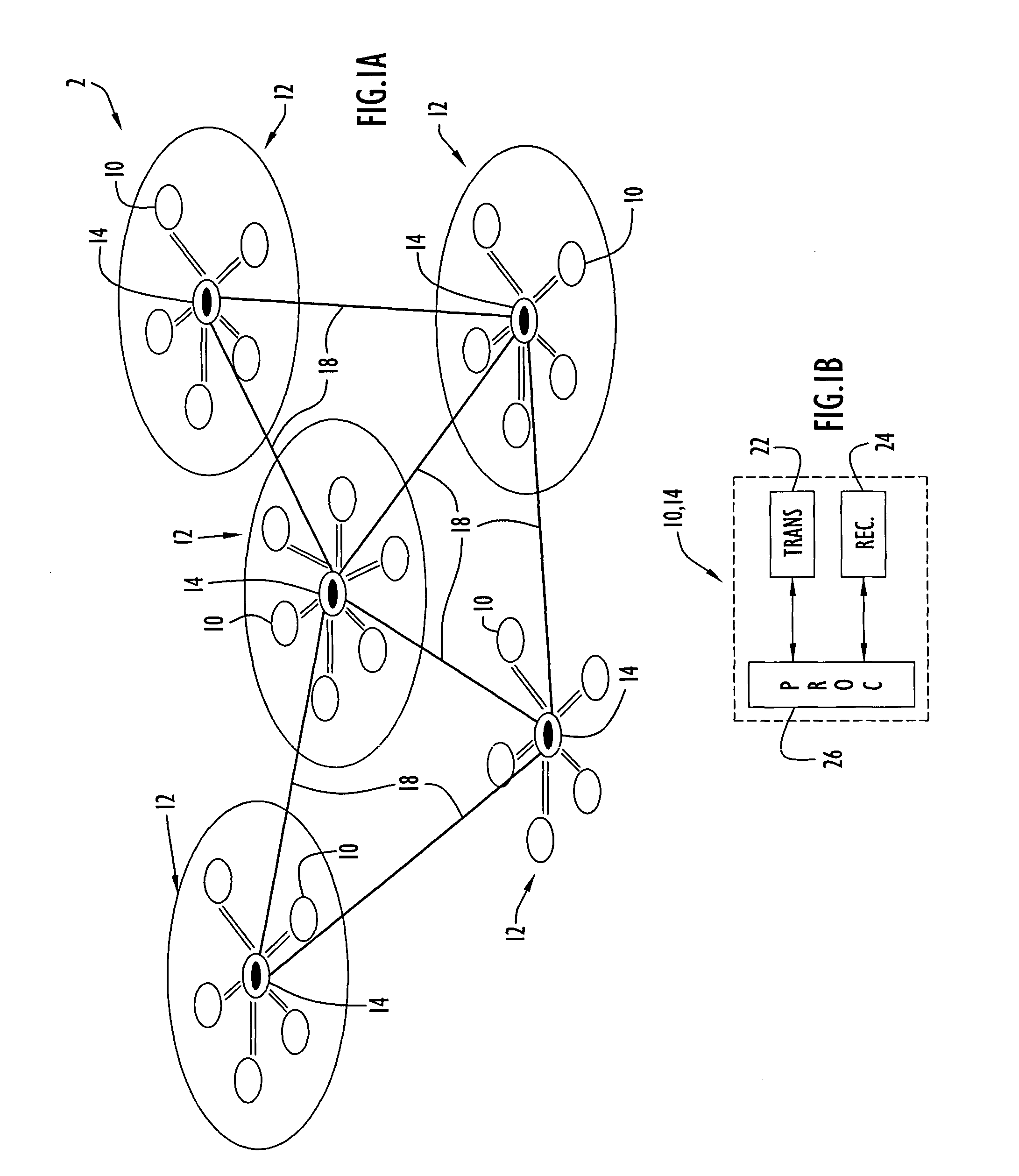Method and apparatus for automatic control of time-of-day synchronization and merging of networks
a technology of automatic control and network synchronization, applied in the field of wireless communication networks, can solve the problems affecting the performance of the network, and affecting the efficiency of the network, so as to reduce the effect of limiting the impact of overall network performance and reducing the amount of time allocated to searching
- Summary
- Abstract
- Description
- Claims
- Application Information
AI Technical Summary
Benefits of technology
Problems solved by technology
Method used
Image
Examples
Embodiment Construction
[0061]The present invention relates to a wireless communication network employing TOD synchronization that supports automatic detection and re-synchronization between GPS based and BTH based TOD networks. If, upon startup, a node is unable to establish connectivity to a network using a pre-configured initial TOD mode (e.g., GPS based TOD mode) the present invention allows the node to switch to an alternate TOD mode (e.g., BTH TOD mode) and to attempt to establish connectivity to a network using the alternate TOD mode. If a node fails to establish connectivity with a BTH master, the node is able to select a new BTH master from among local nodes that it has detected and to start an isolated BTH network. Such support for plural BTH masters allows isolated groups of radio nodes to operate as small networks until connectivity with other networks is detected. Once connectivity with other networks is detected, the present invention allows the separate, isolated networks to merge.
[0062]Usin...
PUM
 Login to View More
Login to View More Abstract
Description
Claims
Application Information
 Login to View More
Login to View More - R&D
- Intellectual Property
- Life Sciences
- Materials
- Tech Scout
- Unparalleled Data Quality
- Higher Quality Content
- 60% Fewer Hallucinations
Browse by: Latest US Patents, China's latest patents, Technical Efficacy Thesaurus, Application Domain, Technology Topic, Popular Technical Reports.
© 2025 PatSnap. All rights reserved.Legal|Privacy policy|Modern Slavery Act Transparency Statement|Sitemap|About US| Contact US: help@patsnap.com



